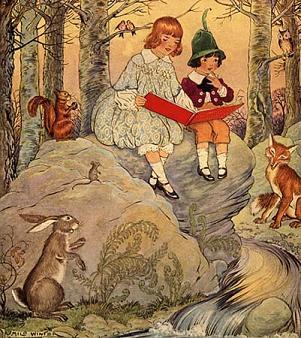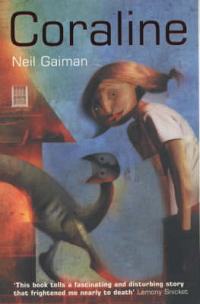Off to see the wizard
While reading The Wizard of Oz with my daughters, I’ve become curious about L. Frank Baum’s spiritual convictions. Like many fairy tales, this one is full of symbolically suggestive material.
For instance, Dorothy has a mark on her forehead, put there by the good witch’s kiss at the beginning of the story, and the winged monkeys sent against her by the wicked witch of the west see it and tell her that they cannot hurt her, because “she is protected by the Power of Good, and that is greater than the Power of Evil.” The head monkey warns, “All we can do is carry her to the castle of the wicked witch and leave her there.” It’s no wonder John Eldredge referred to parts of this tale in Waking the Dead. It’s a great picture of spiritual protection, and of the limited power of evil against the Christian.
But on the other hand, when Dorothy and her friends meet the Wizard of Oz for the first time, it reads like a parody of religious belief. For one thing, all four of the travelers see something different when they enter Oz’s throne room (he insists that they come singly). Dorothy sees a great head. The Scarecrow finds a beautiful woman. The Tin Man finds a terrible beast. The Lion finds a ball of fire. It reminds me of the story of the blind men all feeling different parts of the elephant and believing their impressions are the whole truth. It’s a story I’ve heard used to argue that God is bigger than we can grasp, therefore he must not be real at all — or, at the very least, no understanding of him can be authoritative.
That notion is furthered when the party returns to Oz after accomplishing their mission to kill the wicked witch of the west, and they find the true Oz is a humbug. At first he hides from them and projects merely
a Voice, seeming to come from somewhere near the top of the great dome, and it said, solemnly:
‘I am Oz, the Great and Terrible. Why do you seek me?’ They looked again in every part of the room, and then, seeing no one, Dorothy asked, ‘Where are you?’
‘I am everywhere,’ answered the Voice, ‘but to the eyes of common mortals I am invisible. I will now seat myself upon my throne, that you may converse with me.’
But when they try to get him to deliver on his promises, Toto unveils him, an unimpressive phony hiding behind a screen in the corner. The power and magnificence of this character who has been represented as greater than everyone else have been based on illusion. He arrived in a balloon, so the people of Oz thought he was a diety of the skies. The people of Oz believe their city is beautiful and green because he put green spectacles on them. Usually he hides from his subjects, so it’s because they never see him that they believe him to be great and awesome. He explains the various mechanical tricks he used to manifest different appearances, and when he does consent to grant the wishes of Dorothy’s friends, it’s quite clear from the story that they already have the things they seek: the Scarecrow has brains, the Tin Man has a heart, the Cowardly Lion has courage. All Oz gives them are trinkets that provide emotional assurance.
He’s a fraud through and through.
In doing some cursory investigation, I discovered that Baum was sympathetic to theosophy. He summarizes it this way:
As interpreted by themselves they accept the teachings of Christ, Budda, and Mohammed, acknowledging them Masters or Mahatmas, true prophets each in his generation, and well versed in the secrets of nature. But the truth so earnestly sought is not yet found in its entirety, or if it be, is known only to the privileged few.
The Theosophists, in fact, are the dissatisfied of the world, the dissenters from all creeds.
Interesting, the philosophy that can be suggested in a children’s book that’s surely not intended as a religious tract. Others have doubtless written more knowledgeably and thoroughly on these matters. (Just google L. Frank Baum and theosophy for a sample.) But in scratching the surface to explore my initial hunch in reading Wizard, I can’t help thinking of Aristotle’s words, often repeated at the Christian liberal arts college I graduated from: “All truth is God’s truth.” The thing that makes Christian education distinctive is not that we study only Christian writers and thinkers, but that we study all writers and thinkers from a Christian perspective. I don’t agree with the religious vision suggested in Baum’s tale, but it’s furnishing us with some economical pictures of spiritual things that inspire clarification of my own — perhaps eventually my daughters’ — beliefs. It looks like the Christian liberal arts journey may be underway.


